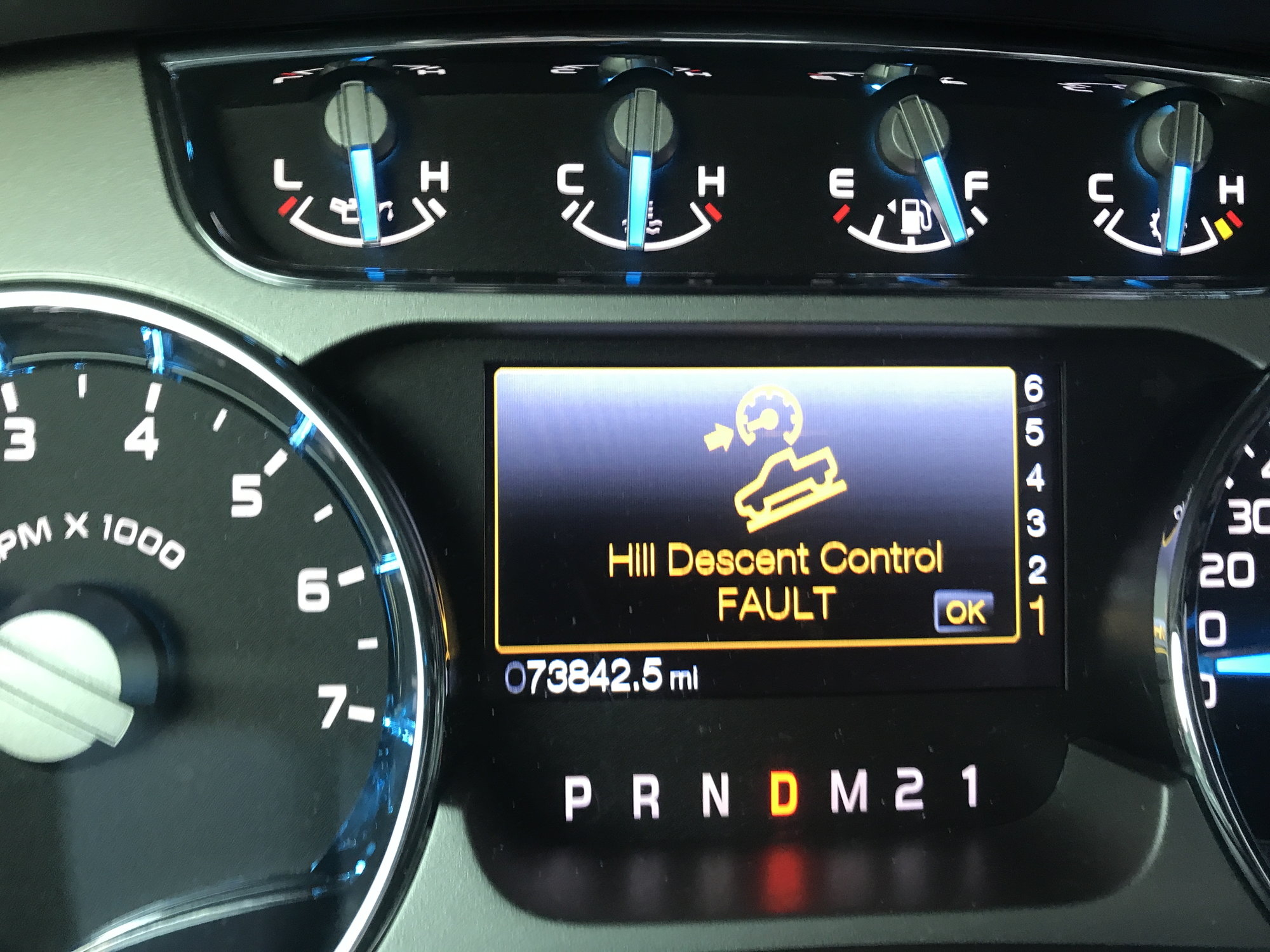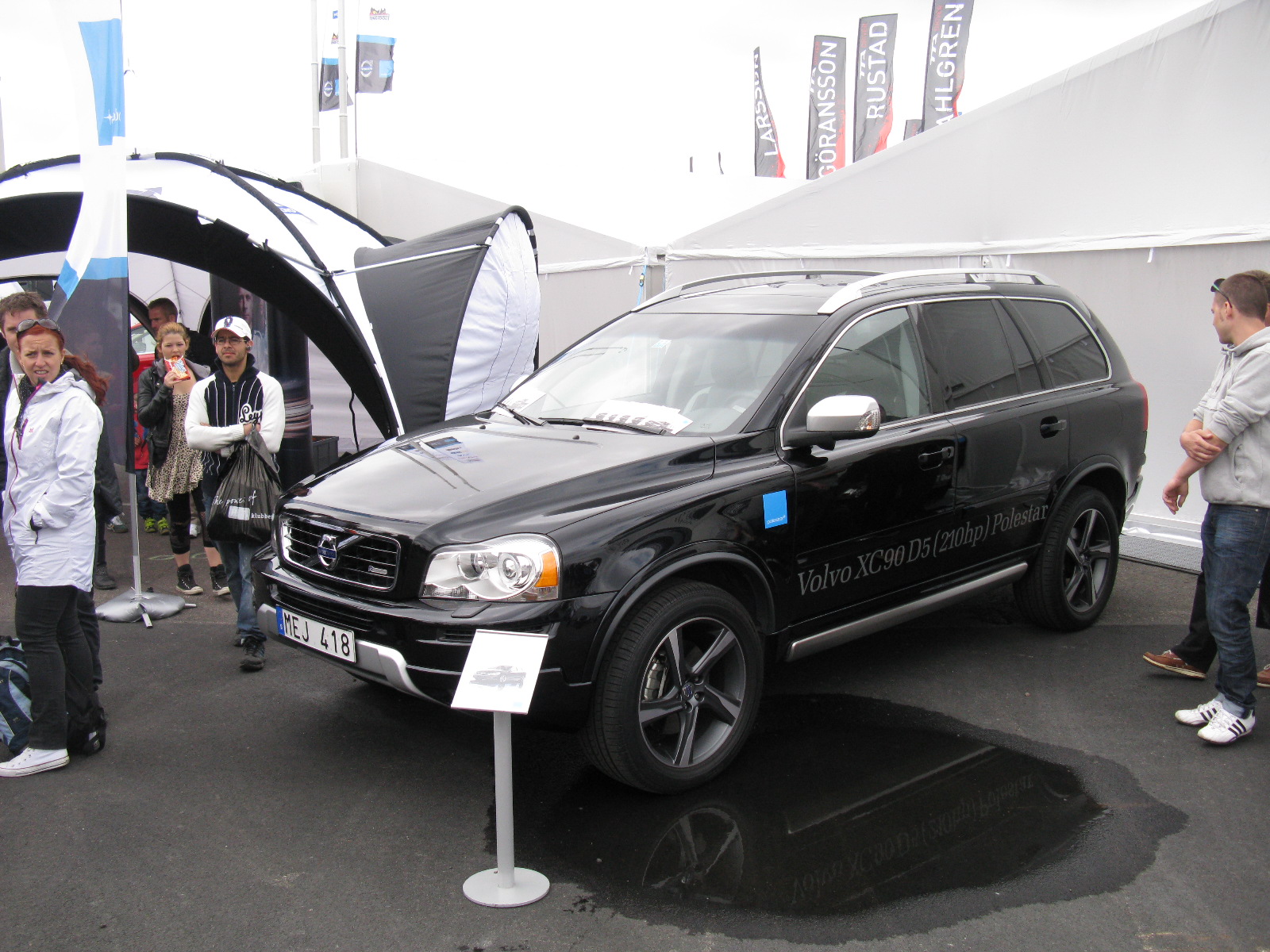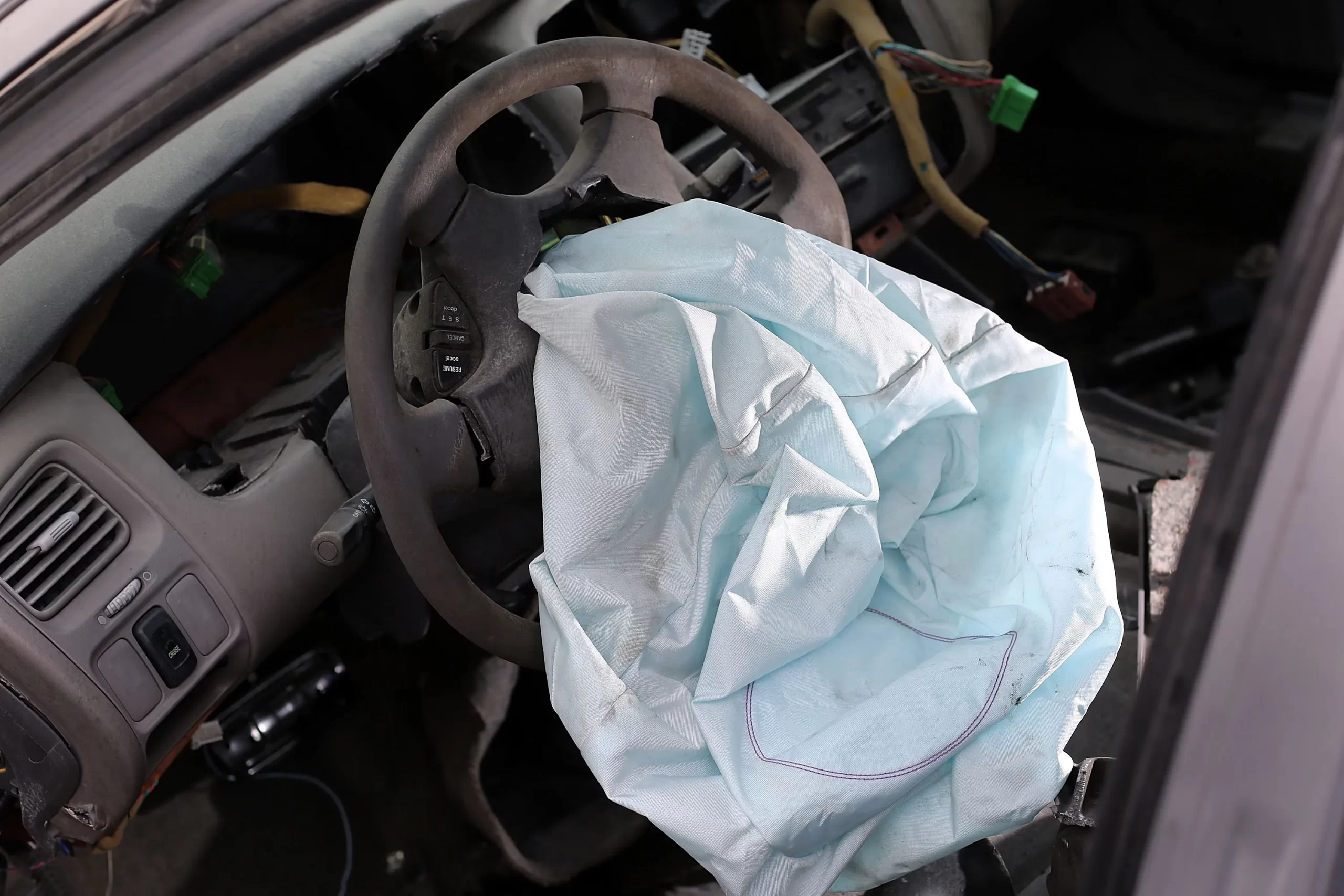If you’re a car owner, you know how frustrating it can be when your vehicle’s Hill Descent Control (HDC) system malfunctions.
Fortunately, you don’t have to be a mechanic to fix this issue.
In this article, we’ll provide you with a step-by-step guide on how to fix Hill Descent Control Fault.
We’ll explain what HDC is, how it works, and what causes it to malfunction.
We’ll also provide you with some simple steps to get your hill descent control system back to normal and running in no time.
So, buckle up and let’s get started!
What Is HDC?
HDC commonly refers to Hill Descent Control, a feature designed to enhance driver control and safety when descending steep slopes.
Activated by the driver, Hill Descent Control utilizes the vehicle’s braking system to automatically regulate speed during downhill maneuvers, particularly in off-road or challenging terrains.
By applying brakes to individual wheels as necessary, HDC ensures a controlled descent, preventing the vehicle from gaining excessive speed and enhancing stability on uneven surfaces.
This feature is particularly useful for off-road enthusiasts and provides an added layer of confidence and safety when navigating challenging landscapes.
How Does HDC Work?
Hill Descent Control (HDC) is an advanced automotive feature designed to enhance safety and control when navigating downhill terrains, particularly in off-road situations. This technology is often found in modern SUVs and off-road vehicles, offering drivers a valuable tool for managing descents on steep gradients. The primary purpose of HDC is to maintain a controlled and safe speed while descending slopes, preventing the vehicle from accelerating too rapidly and ensuring optimal stability.
When activated by the driver, typically through a dedicated button on the dashboard or center console, HDC engages a combination of sensors and the vehicle’s braking system to regulate the descent. As the vehicle approaches a downhill slope, the driver activates HDC, and the system takes over to manage the speed.
HDC uses the vehicle’s onboard sensors to detect the slope and assess the angle of descent. This information is then processed by the vehicle’s electronic control unit (ECU), which determines the appropriate braking force needed to maintain a controlled speed. The braking force is selectively applied to individual wheels as needed, helping to prevent wheel lockup and skidding.
One key aspect of HDC is its ability to work in conjunction with other vehicle systems, such as the anti-lock braking system (ABS) and traction control. By coordinating these systems, HDC optimizes braking distribution, allowing the vehicle to negotiate steep descents with maximum traction and stability.
Importantly, HDC also provides the driver with the flexibility to adjust the speed manually using the accelerator and brake pedals. This means that while the system actively assists in maintaining a controlled descent, the driver retains the ability to intervene and adapt to specific driving conditions.
What does the Hill Descent Control warning light mean?
The Hill Descent Control (HDC) warning light in a vehicle is designed to alert the driver when there’s an issue or fault with the Hill Descent Control system. The HDC system is a safety feature commonly found in off-road or rugged terrain vehicles, designed to assist drivers when descending steep slopes by automatically controlling the vehicle’s speed.
When the Hill Descent Control warning light illuminates on the dashboard, it typically signifies one of the following situations:
-
System Activation Failure
The HDC warning light may indicate that there’s a problem preventing the Hill Descent Control system from activating. This could be due to a malfunction in various components such as the brake light switch, wheel speed sensors, or other elements involved in the HDC system.
-
System Malfunction
The warning light might signal a malfunction within the HDC system. This could be caused by issues like a faulty wheel speed sensor, a malfunctioning brake light switch, or other electronic and sensor-related problems.
-
Temporary Disabled Mode
Some vehicles may temporarily disable the Hill Descent Control system under certain conditions, such as when the vehicle is not in an appropriate driving mode or when there’s a malfunction detected. The warning light informs the driver that the HDC system is currently inactive.
Why is my Hill Descent Control on?
If your Hill Descent Control (HDC) system is unexpectedly on or active, it could be due to a variety of reasons. Here are some common explanations for why the Hill Descent Control might be engaged:
-
Driving Mode Selection
Some vehicles have different driving modes, and certain modes may activate the Hill Descent Control system automatically. Check your vehicle’s manual to understand how the different driving modes affect the HDC system and whether it is expected to be active in the selected mode.
-
Vehicle Speed
Hill Descent Control typically activates at low speeds, especially when descending steep slopes. If you are driving downhill at a speed within the range where HDC is designed to operate, the system may engage automatically.
-
Terrain Conditions
HDC is designed to assist in controlling the vehicle’s descent on challenging terrains. If the system detects a steep downhill slope, it may activate to help maintain a controlled speed and enhance stability.
-
User Activation
Some vehicles allow drivers to manually activate or deactivate the Hill Descent Control system. Check your vehicle’s controls to see if there is a specific button or setting for HDC, and ensure it is in the desired state.
-
System Malfunction
On the flip side, if the HDC system is on unexpectedly and none of the above conditions apply, it could indicate a malfunction in the system. Issues with sensors, the brake light switch, or other components may trigger the HDC system erroneously. In such cases, it’s advisable to have the vehicle inspected by a qualified mechanic to diagnose and address the problem.
What Causes HDC To Malfunction?
1: Hill Descent Control Fault
When your vehicle’s dashboard displays the message “Hill Descent Control Fault” or “Hill Descent Control Malfunction,” it signals the detection of an issue by the Powertrain Control Module (PCM) with the Hill Descent Control (HDC) system. This warning serves as an alert that the PCM, a crucial component overseeing various vehicle functions, has identified a malfunction or fault within the HDC system.
The HDC system is designed to enhance driver control during downhill maneuvers, particularly in challenging terrains, by regulating the vehicle’s descent speed through selective braking.
The appearance of this warning indicates that a diagnostic check conducted by the PCM has detected an irregularity, and further inspection or maintenance may be required to ensure the proper functioning of the HDC system.
2: Faulty brake light switch
A malfunctioning brake light switch poses a potential obstacle to the seamless operation of the Hill Descent Control (HDC) system. The brake light switch is a critical component designed to detect the activation of the brake pedal. When the brake pedal is pressed, the switch sends a signal to various vehicle modules, including the Hill Descent Control module, indicating that the brakes are engaged.
However, if the brake light switch experiences a malfunction, it hinders its ability to accurately transmit this crucial signal. In the context of HDC, this means that the system may not receive the necessary confirmation that the brakes are applied when the driver initiates the descent control feature. Consequently, the HDC system may fail to activate or operate suboptimally due to the absence of a proper signal from the brake light switch.
This issue underscores the interdependence of vehicle systems and the importance of each component functioning seamlessly for the overall performance of safety features like Hill Descent Control. A faulty brake light switch can impede the HDC system’s ability to regulate the vehicle’s descent speed through controlled braking, compromising the intended safety enhancements during downhill maneuvers.
3: Bad wheel speed sensor
The appearance of an alert signaling a “Hill Descent Control Fault” or similar message on the dashboard can also be attributed to a malfunctioning wheel speed sensor. Wheel speed sensors play a crucial role in providing real-time data to the vehicle’s electronic control systems, including the Hill Descent Control (HDC) module.
When a wheel speed sensor malfunctions, it disrupts the accurate transmission of speed-related information from the affected wheel to the HDC module. In the context of HDC, this can lead to a failure in obtaining precise data necessary for the system to adjust and control the vehicle’s descent speed effectively. As a result, the HDC system may be unable to operate optimally or may fail to engage altogether.
A malfunctioning wheel speed sensor can be caused by various factors, including sensor damage, wiring issues, or debris accumulation around the sensor. It is essential to address this issue promptly to restore the proper functioning of the HDC system and maintain optimal safety during downhill driving scenarios.
What Is the Step-by-Step Guide On How To Fix Hill Descent Control Fault?
Step 1: Check the Brake Light Switch
The initial step in addressing a Hill Descent Control Fault is to inspect the brake light switch. A malfunctioning brake light switch can disrupt communication with the Hill Descent Control (HDC) module, preventing the system from activating properly.
- Turn off the engine and remove the key from the ignition.
- Press the brake pedal and hold it down.
- Request someone to check if the brake lights illuminate.
- If the brake lights fail to turn on, this indicates a faulty brake light switch that needs replacement.
Step 2: Check the Wheel Speed Sensor
If the brake light switch proves to be functional, the next crucial step is to examine the wheel speed sensor. A defective wheel speed sensor can also trigger the “Hill Descent Control Fault” alert, compromising the system’s ability to operate effectively.
- Turn off the engine and remove the key from the ignition.
- Locate the wheel speed sensor on the wheel hub assembly.
- Disconnect the electrical connector from the sensor.
- Employ a multimeter to measure the resistance of the sensor.
- If the resistance falls outside the acceptable range, the wheel speed sensor is faulty and necessitates replacement.
Step 3: Replace the Faulty Component
Upon identifying the problematic component—whether it’s the brake light switch or the wheel speed sensor—the next step is replacement. Acquire the replacement part from a local auto parts store or through online channels. It is imperative to adhere to the manufacturer’s guidelines during the installation process.
- Purchase the replacement component from a reputable source, ensuring compatibility with your vehicle’s make and model.
- Follow the manufacturer’s instructions meticulously during the installation to guarantee proper fit and functionality.
- Connect the new brake light switch or wheel speed sensor securely, ensuring all electrical connections are sound.
- Test the system by pressing the brake pedal and observing if the brake lights illuminate.
- If the replacement was for the wheel speed sensor, conduct a road test to ensure the HDC system operates without triggering the fault alert.
How do I turn off hill descent mode? – Step by Step
The process for turning off Hill Descent Control (HDC) may vary slightly depending on the make and model of your vehicle. However, in most cases, the deactivation can be achieved using the following general steps:
1: Bring the Vehicle to a Complete Stop
Ensure the vehicle is stationary, either on a level surface or a flat road.
2: Shift to Neutral or Drive
Depending on your vehicle, shift the transmission to either “Neutral” or “Drive.” The exact step may vary, so consult your vehicle’s manual for guidance.
3: Locate the HDC Button or Control
Look for the Hill Descent Control button or control on the dashboard or center console. It is often marked with “HDC” or a similar designation.
4: Press or Turn Off the HDC
Press the HDC button or engage the control to turn off the Hill Descent Control system. In some vehicles, a single press of the button may deactivate HDC, while others might require a longer press or turning the control knob.
5: Check Dashboard Indicators
After deactivating HDC, check the dashboard for any relevant indicators or lights. Some vehicles may have a visual confirmation on the instrument cluster to signify that Hill Descent Control is now off.
6: Shift to Desired Gear
If your vehicle requires you to shift to a specific gear after deactivating HDC, follow the manufacturer’s recommendations. This might involve shifting back to “Drive” or another appropriate gear for normal driving.
7: Resume Driving
Once you have deactivated Hill Descent Control and shifted to the appropriate gear, you can resume normal driving.
How do you activate hill descent?
Activating Hill Descent Control (HDC) varies depending on the make and model of your vehicle, as manufacturers may have different systems and controls. However, here is a general guide that should give you an idea of how to activate HDC:
1: Find a Suitable Terrain
Hill Descent Control is designed for use on steep descents or challenging terrains. Ensure you are on a suitable slope or terrain where HDC can be safely employed.
2: Bring the Vehicle to a Complete Stop
Come to a full stop at the top of the descent. Ensure the vehicle is stationary before activating HDC.
3: Engage 4WD (if applicable)
If your vehicle has a four-wheel-drive (4WD) system and it’s required for HDC activation, engage the 4WD mode according to your vehicle’s specifications.
4: Locate the HDC Control
Look for the Hill Descent Control button or control on the dashboard or center console. It is often marked with “HDC” or a similar designation. Refer to your vehicle’s manual to find the exact location.
5: Press or Engage HDC
Press the HDC button or engage the control to activate the Hill Descent Control system. Some vehicles may require a longer press or turning a control knob to activate HDC.
6: Adjust Speed (if applicable)
Depending on your vehicle, you may have the option to adjust the descent speed using controls provided by the HDC system. Refer to your vehicle’s manual for details on how to adjust the speed, if available.
7: Release the Brake
Once HDC is activated, release the brake pedal. The HDC system will take over and control the vehicle’s descent speed.
8: Steer as Necessary
While HDC controls the speed, you are still responsible for steering. Steer the vehicle as needed to navigate the descent safely.
9: Monitor Dashboard Indicators
Keep an eye on the dashboard for any HDC-related indicators or lights. Some vehicles provide visual feedback to confirm that HDC is active.
10: Deactivate HDC When Descent is Complete
Once you’ve descended the slope and no longer need HDC, you can deactivate the system. Press the HDC button again or follow the specific instructions in your vehicle’s manual.
Where Is Hill Descent Control Fault Fuse Location?
The location of the fuse for Hill Descent Control (HDC) system faults varies by vehicle make and model, typically found in the engine compartment or interior fuse box.
To locate the HDC fuse, consult your vehicle’s owner’s manual for a detailed fuse box diagram and designation.
FAQs
How can I check the brake light switch?
To inspect the brake light switch, turn off the engine, remove the key, press and hold the brake pedal, and have someone verify if the brake lights illuminate. If the lights do not activate, it indicates a defective brake light switch necessitating replacement.
How can I check the wheel speed sensor?
To examine the wheel speed sensor, turn off the engine, locate the sensor on the wheel hub assembly, disconnect the electrical connector, and use a multimeter to measure the sensor’s resistance. An out-of-range resistance reading indicates a faulty sensor requiring replacement.
What is the Hill Descent Control system’s speed range?
The Hill Descent Control system maintains speeds between 2-12 mph during downhill descents. If your speed exceeds 20 mph, the system remains active but won’t re-engage to set a descent speed until you drop below 20 mph again.
What is the function of the anti-lock brakes in HDC?
The anti-lock brakes play a pivotal role in maintaining a consistent preset speed, allowing drivers to focus on steering while HDC manages the braking aspect.
What is the function of the traction control technology in HDC?
Traction control technology in HDC helps prevent wheel slippage, ensuring the vehicle adheres to the preset speed established by the system.
What is the role of the PCM in HDC?
The PCM is tasked with detecting any issues within the HDC system and alerting the driver through the “Hill Descent Control Fault” or “Hill Descent Control Malfunction” message on the dashboard, ensuring prompt attention to potential problems.
Conclusion
Fixing the Hill Descent Control Fault is a relatively simple process that can be done by anyone with basic knowledge of car mechanics.
The first step is to identify the problem by checking the brake light switch and the wheel speed sensor.
Once you’ve identified the faulty component, replace it with a new one.
It’s important to follow the manufacturer’s instructions when installing the new component.
By following the step-by-step guide provided in this article, you can save yourself time and money by fixing the HDC system yourself.
Remember to always take safety precautions when working on your vehicle.
If you’re unsure about any of the steps, consult a professional mechanic.
We hope this guide has been helpful to you and that you’re now able to fix your Hill Descent Control Fault with ease.
If you have any other questions or concerns, feel free to ask.
We’re always here to help!




